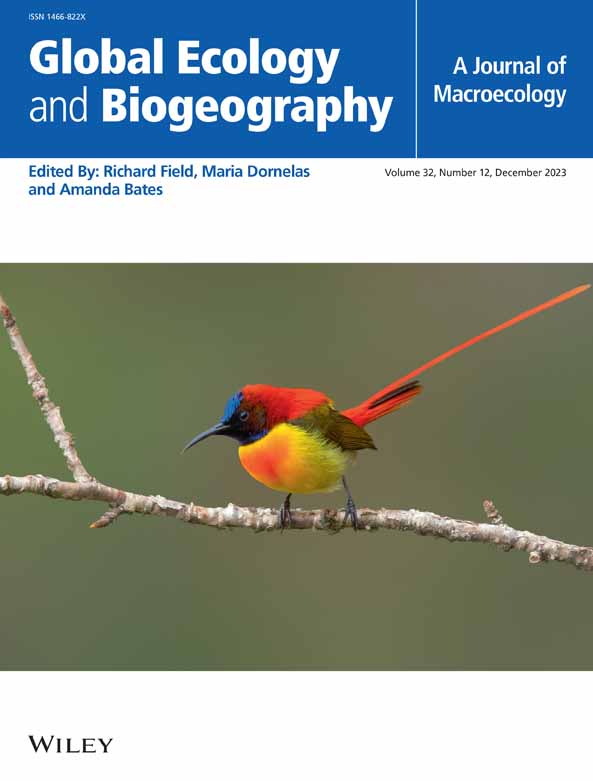Canopy Composition Outperforms Macroenvironment in Explaining European Forest Understory Composition
Abstract
Aim
Diversity patterns in forest understories have traditionally been studied using macroclimatic variables. However, microenvironmental conditions below forest canopies are likely more relevant, though difficult to obtain. Species composition of the canopy layers can serve as a proxy for capturing microenvironmental conditions underneath trees and shrubs. In this study, we modelled the understory plant species (herbaceous and small woody species < 2 m) composition across European forests.
Time Period
Present day.
Location
All forest types across Europe.
Taxa Studied
Vascular plants.
Methods
We compared the performance of a baseline model relying solely on macroenvironmental predictor variables against several canopy-informed models incorporating three β-diversity facets (taxonomic, functional and phylogenetic) of the canopy layers (i.e., the tree and shrub layer). We subsequently decomposed the explained deviance in the observed spatial variation in taxonomic composition of the understory layer between macroenvironmental conditions and all three facets of canopy-derived metrics of β-diversity. We finally compared and mapped spatial predictions in understory plant species composition between the baseline model and the best-performing canopy-informed model.
Results
Our canopy-informed models that included β-diversity metrics of canopy layers outperformed the baseline model based solely on macroenvironmental predictors. Beta-diversity metrics relying on canopy species composition provided a greater explanatory power than macroenvironmental predictors. Specifically, the taxonomic β-diversity of the shrub layer, followed by that of the tree layer, was the main variable driving the most performant canopy-informed model. Maps of the predicted understory species composition indicated greater site heterogeneity when relying on canopy-informed models than on the baseline model.
Conclusions
This work highlights how the inclusion of taxonomical species composition from the canopy layers can significantly improve the modelling of the understory plant species composition.

 求助内容:
求助内容: 应助结果提醒方式:
应助结果提醒方式:


